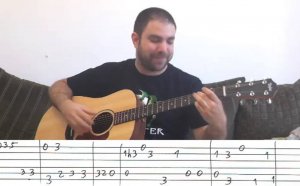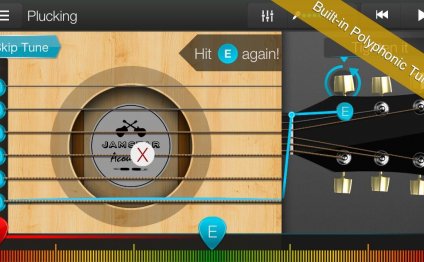
Basic guitar lessons for Beginners acoustic
 Research and choose instruction websites online. The Internet has hundreds of web sites offering "free" lessons, most of which are very well designed and can be applied to your practice routine. You are also more likely to find in-depth answers to your questions that way.
Research and choose instruction websites online. The Internet has hundreds of web sites offering "free" lessons, most of which are very well designed and can be applied to your practice routine. You are also more likely to find in-depth answers to your questions that way.
Learn to distinguish between a good musician and a worse one. If you are about as good as your favorite musician after playing guitar for a couple weeks, try following a more skilled musician.
Study the physical instrument itself. Learn the names and functions of the guitar parts, and how they work together to make sounds. Learn how sound is emitted from the guitar, and how tension affects the strings. A half hour spent on this basic understanding will be repaid many times over throughout your learning and playing time.
Teach yourself as many different ways to play a chord as you can. For instance, there are 10 different fret hand positions for which to play the C chord. Obviously, go for a 'perfect' open C chord first, but the more ways you know to play a chord, the more flexibility you'll have in moving from one chord to another. This can also come in handy if you decide to try composing new music.
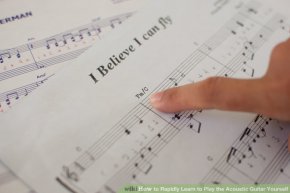 Practice daily (5 out of 7 days minimum) for at least a half hour. If you want to learn quickly, you must force-feed your brain with guitar. This entails learning how to have a good ear for changes in sound/pitch/intonation, comfortably positioning your body (including leg, back, shoulder and arm positions), strum-hand coordination and technique, fret hand coordination and technique, and most importantly, fret hand muscle memory.
Practice daily (5 out of 7 days minimum) for at least a half hour. If you want to learn quickly, you must force-feed your brain with guitar. This entails learning how to have a good ear for changes in sound/pitch/intonation, comfortably positioning your body (including leg, back, shoulder and arm positions), strum-hand coordination and technique, fret hand coordination and technique, and most importantly, fret hand muscle memory.
Practice the chords and hand positions silently while watching TV or talking to a friend. Learning fret hand muscle memory is much more difficult than learning strum hand muscle memory (excluding finger picking). You don't have to use your other hand at all, just go over the different chords over and over. Television or a conversation will help you avoid looking down at your hands too much. However, when learning the chord positions you should study your fingers intently - make sure you get the chord position correct so that your muscle memory is correct. Over time, look at your fingers less often, but still check that you have achieved the correct position. Over time your confidence in your finger position for chords will grow and you will not have to look so often.
Build calluses on your fingertips. This will be painful, and will make your fingers hurt. Once you develop calluses though, the pain you once felt will surprisingly disappear. The length of time this takes is up to you. The more you practice, the faster it will happen. There are several callus-building products you can buy as well.
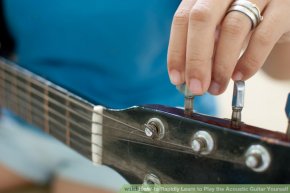 Learn barre chords along with open chords. Don't skip barre chords simply because they're difficult. As with developing calluses, the more you play the easier it will become. Barring a chord is almost entirely dependent upon the strength in your fret hand.
Learn barre chords along with open chords. Don't skip barre chords simply because they're difficult. As with developing calluses, the more you play the easier it will become. Barring a chord is almost entirely dependent upon the strength in your fret hand.
Build up the muscles in your fret hand by repeatedly squeezing a tennis ball or similar object for 5 minutes, a few times a day. (Be careful though, this can lead to Repetitive Stress Syndrome)
10
Allow yourself to become frustrated. It's inevitable. It's normal. That chord you've been trying to voice cleanly for the past few days, or even weeks, will in time sound clear and distinct. Keep working at it and before you know it, just strumming along, you'll try again to voice that chord perfectly and will do so.
11
Practice. Practice. Practice. Practice makes perfect isn't just some old wives' tale. When practicing, strive for quality; if you practice sloppily you'll be making bad habits permanent. A better aphorism in fact might be, "Practice makes permanent." Also, just as weight-training athletes rotate their exercises, focusing on one part of the body one day, it's possible to practice passages focusing on different aspects - tone, smoothness, speed, accuracy. By concentrating on different practice facets of the music separately, you can hone your skills and improve your overall playing!
12
Play along with CD versions of songs you like. The CD player is a great tool for music learners because it is easy to rewind and repeat even very small pieces of a song.
13
Start to play songs. There are two ways to read guitar music. One technique is called sheet music and the other one is called tab; Googling the topic and learning to read both is extremely valuable.
14
Play more than one type of guitar. Start learning the bass, play the classical guitar, play the tenor guitar, play the electric guitar. You will get incorporated with the sounds of the different guitars.
15
Enjoy your new guitar playing skills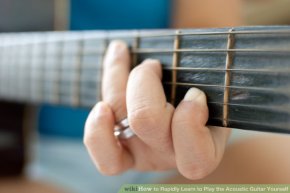
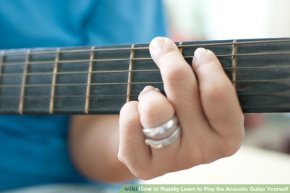
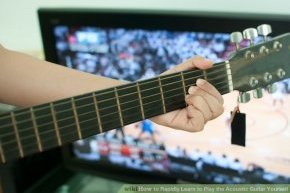
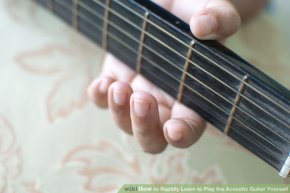
YOU MIGHT ALSO LIKE
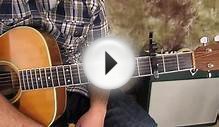
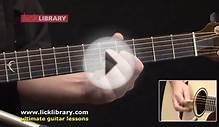

Share this Post
Related posts
Acoustic Blues Guitar Lessons for Beginners
Every guitar player experiences a major turning point early on in their education. After the requisite, and often times…
Read MoreYouTube Guitar lessons for Beginners acoustic
How to Get the Most from Your YouTube Learning Experience Want to improve your playing, but don’t have money or time to dedicate…
Read More

